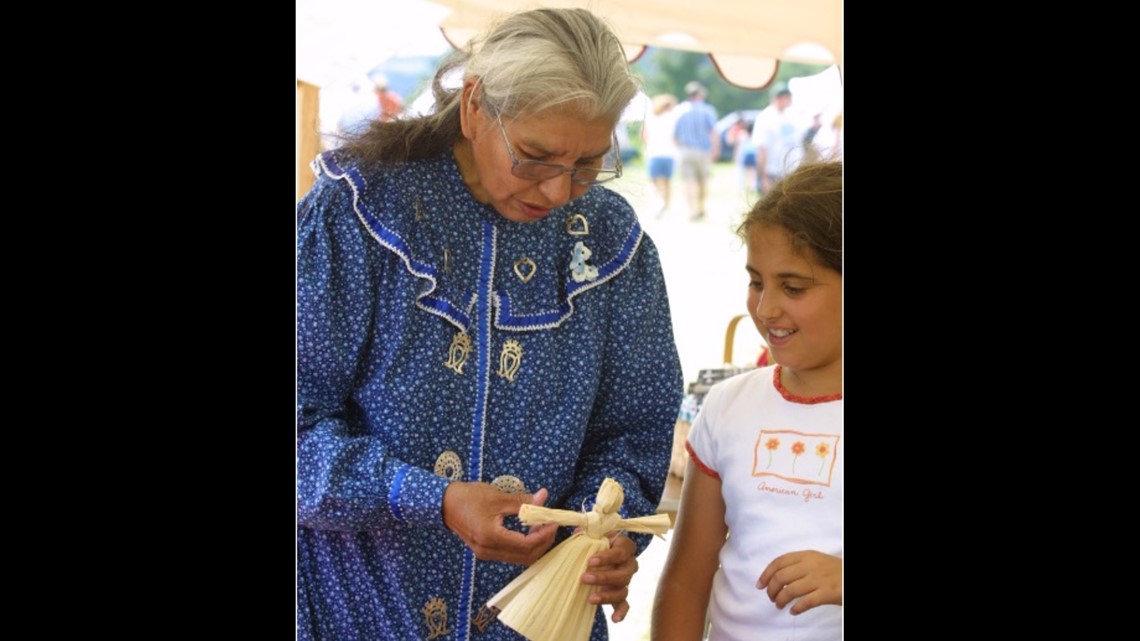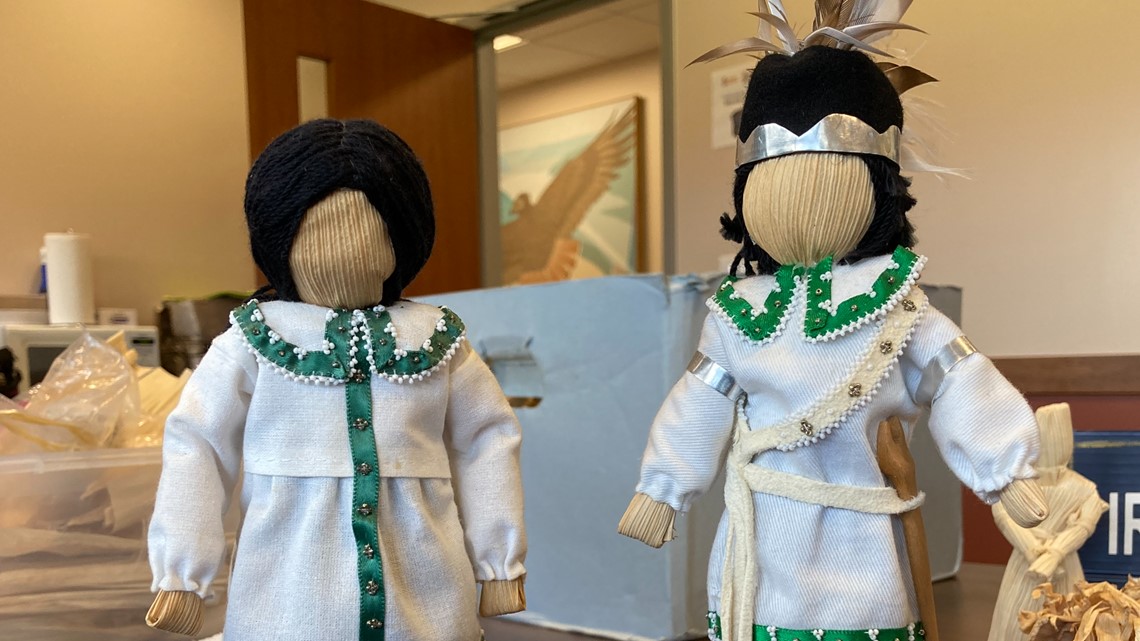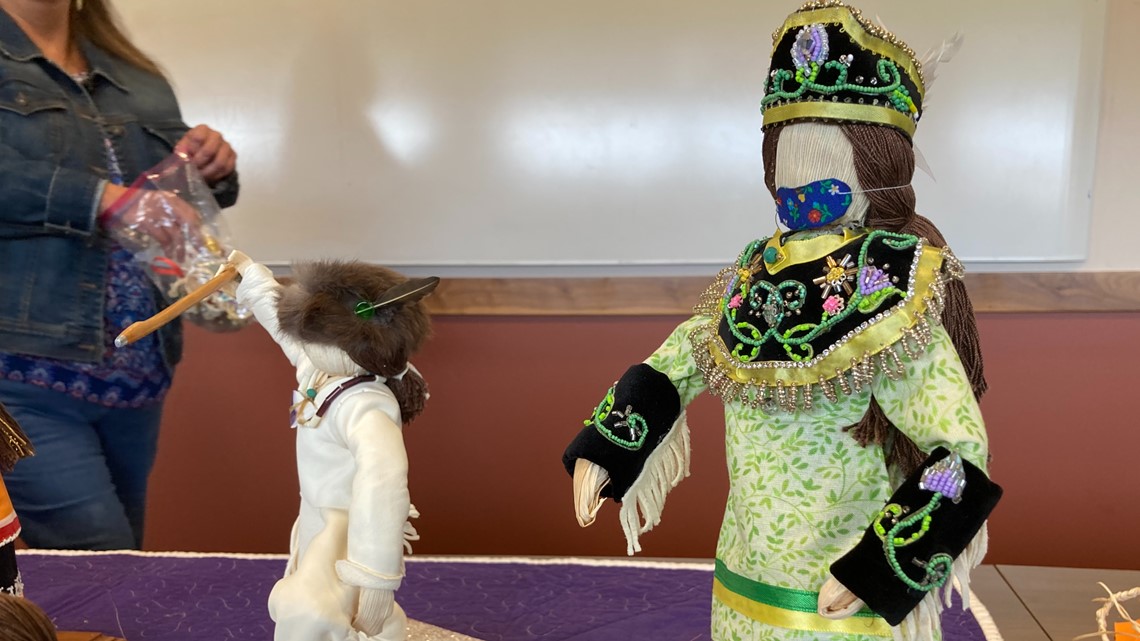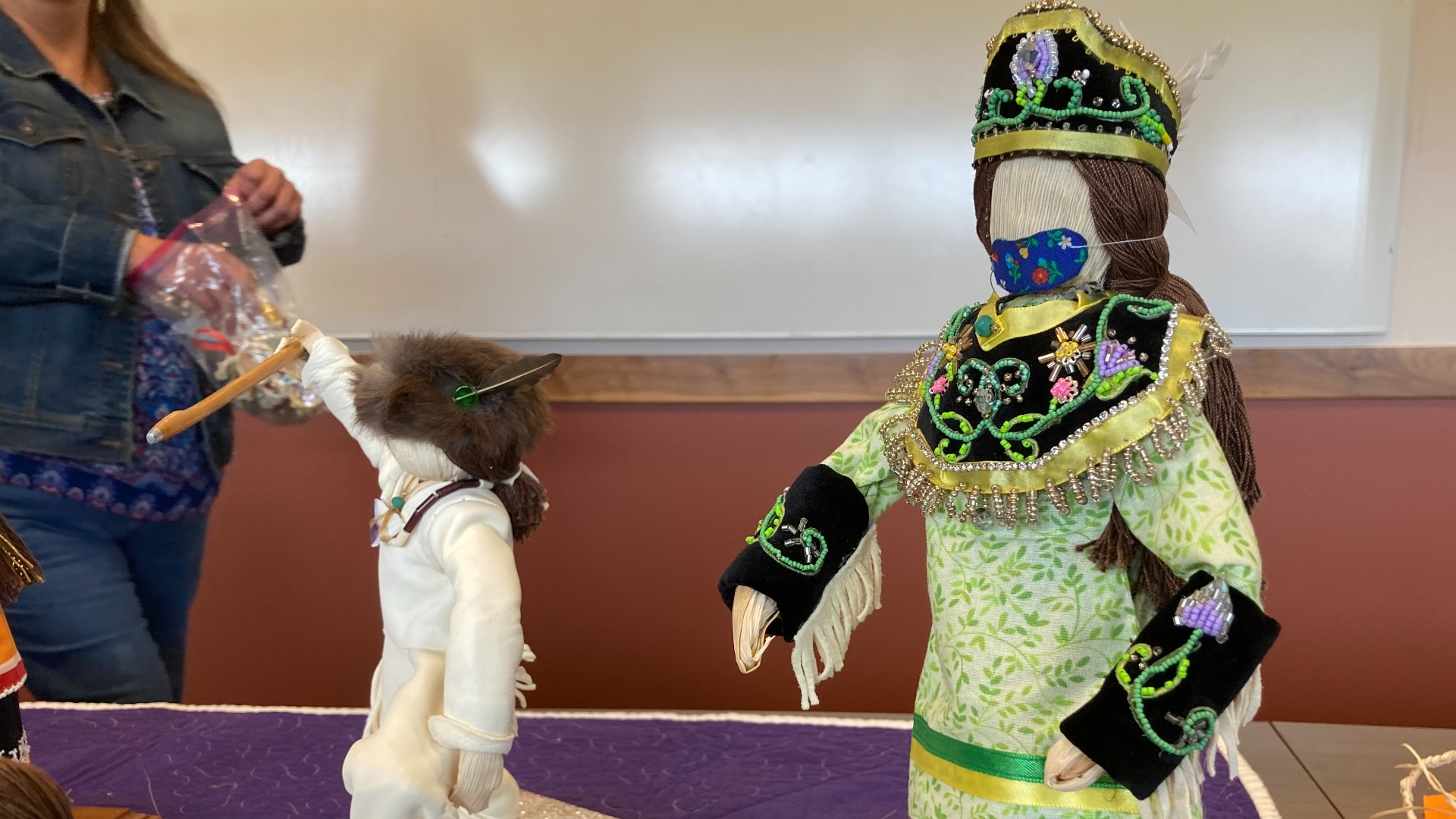SALAMANCA, N.Y. — Tradition is a tie that binds people through generations.
Much like the sinew they use to secure the corn husk dolls they create, the Iroquois Dollmakers in Salamanca are connected by both their family and a centuries old custom that they are keeping alive.
Marcy Kane, her sister and three daughters have been making corn husk dolls since they were children. Lillian Kane, Marcy's mother and the founder of the group, taught her when she was 13.
"I made a comment to my mom one day," Marcy said. "I said, 'I'm bored,' and she kind of looked at me and said, 'I can fix that.' And I said, 'OK.' She had the material in the closet that I didn't know, and she sat me down and went through each instruction, step by step, until I finally got it."


The craft was then passed on to Marcy's daughters, and in 1997 the Iroquois Dollmakers were founded by Grandmother Lillian, with a goal of sharing their knowledge with others. The group has passed the art and the wisdom that comes with to thousands of students of all ages.
"She took the time to teach me how to make the dolls, and from then I said we can actually share this lesson and craft with a lot of other people," said Antoinette Scott, one of Marcy's daughters.
Antoinette went on to explain that the art of dollmaking was entwined with existence centuries ago, a way to honor the lifegiving corn and make use of the entire plant.
"Corn is just so important to our culture and our survival," Antoinette said. "Just to use every single part of the plant, and so there was some extra leftover corn husks, and our ancestors twisted and tied and folded, and came up with a doll."


Sister Bernadette Scott says that the dolls were used as entertainment as well as to impart certain teachings.
"They were also used in the Longhouse for traditional teaching, and as a visual prop, if you want to call it, for children, people just sitting around the fire talking, and these were our props for our lessons that we would use," she said.
Their lack of faces is taken from an old Seneca legend about a vain young woman who was punished for that vanity by the Creator. Marcy tells that the young woman eventually learned an important lesson.
"Only the Creator can give us our faces. We try to teach that it's what's inside that's important, and that we are all different, but it's what's on the inside that makes us special," she said.


As is often true, the simplest things can be our greatest teachers. These dolls have not only brought this family closer together, but from them others can learn about a still thriving culture, one that has endured devastating oppression and still perseveres with strength.
Antoinette believes the lessons we can all learn are as important today as they were centuries in the past.
"I'm so blessed that we are able to carry on, even though they look so simple, sometimes just going back to the simple ways is comforting to me, knowing that I can create and learn just from the simple things in life," she said.
RELATED VIDEO:

